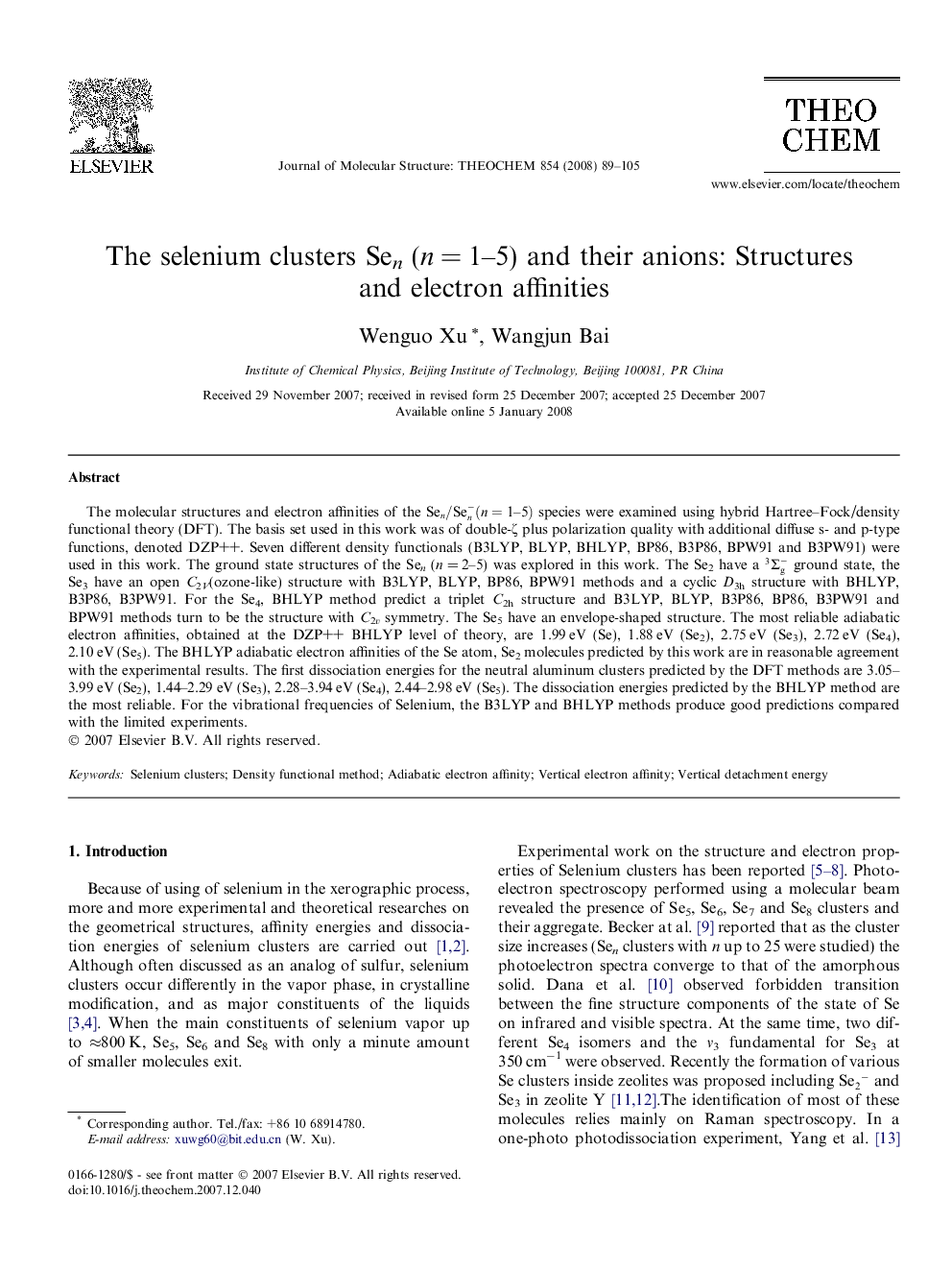| Article ID | Journal | Published Year | Pages | File Type |
|---|---|---|---|---|
| 5418166 | Journal of Molecular Structure: THEOCHEM | 2008 | 17 Pages |
Abstract
The molecular structures and electron affinities of the Sen/Sen-(n=1-5) species were examined using hybrid Hartree-Fock/density functional theory (DFT). The basis set used in this work was of double-ζ plus polarization quality with additional diffuse s- and p-type functions, denoted DZP++. Seven different density functionals (B3LYP, BLYP, BHLYP, BP86, B3P86, BPW91 and B3PW91) were used in this work. The ground state structures of the Sen (n = 2-5) was explored in this work. The Se2 have a 3Σg- ground state, the Se3 have an open C2V(ozone-like) structure with B3LYP, BLYP, BP86, BPW91 methods and a cyclic D3h structure with BHLYP, B3P86, B3PW91. For the Se4, BHLYP method predict a triplet C2h structure and B3LYP, BLYP, B3P86, BP86, B3PW91 and BPW91 methods turn to be the structure with C2v symmetry. The Se5 have an envelope-shaped structure. The most reliable adiabatic electron affinities, obtained at the DZP++ BHLYP level of theory, are 1.99 eV (Se), 1.88 eV (Se2), 2.75 eV (Se3), 2.72 eV (Se4), 2.10 eV (Se5). The BHLYP adiabatic electron affinities of the Se atom, Se2 molecules predicted by this work are in reasonable agreement with the experimental results. The first dissociation energies for the neutral aluminum clusters predicted by the DFT methods are 3.05-3.99 eV (Se2), 1.44-2.29 eV (Se3), 2.28-3.94 eV (Se4), 2.44-2.98 eV (Se5). The dissociation energies predicted by the BHLYP method are the most reliable. For the vibrational frequencies of Selenium, the B3LYP and BHLYP methods produce good predictions compared with the limited experiments.
Keywords
Related Topics
Physical Sciences and Engineering
Chemistry
Physical and Theoretical Chemistry
Authors
Wenguo Xu, Wangjun Bai,
